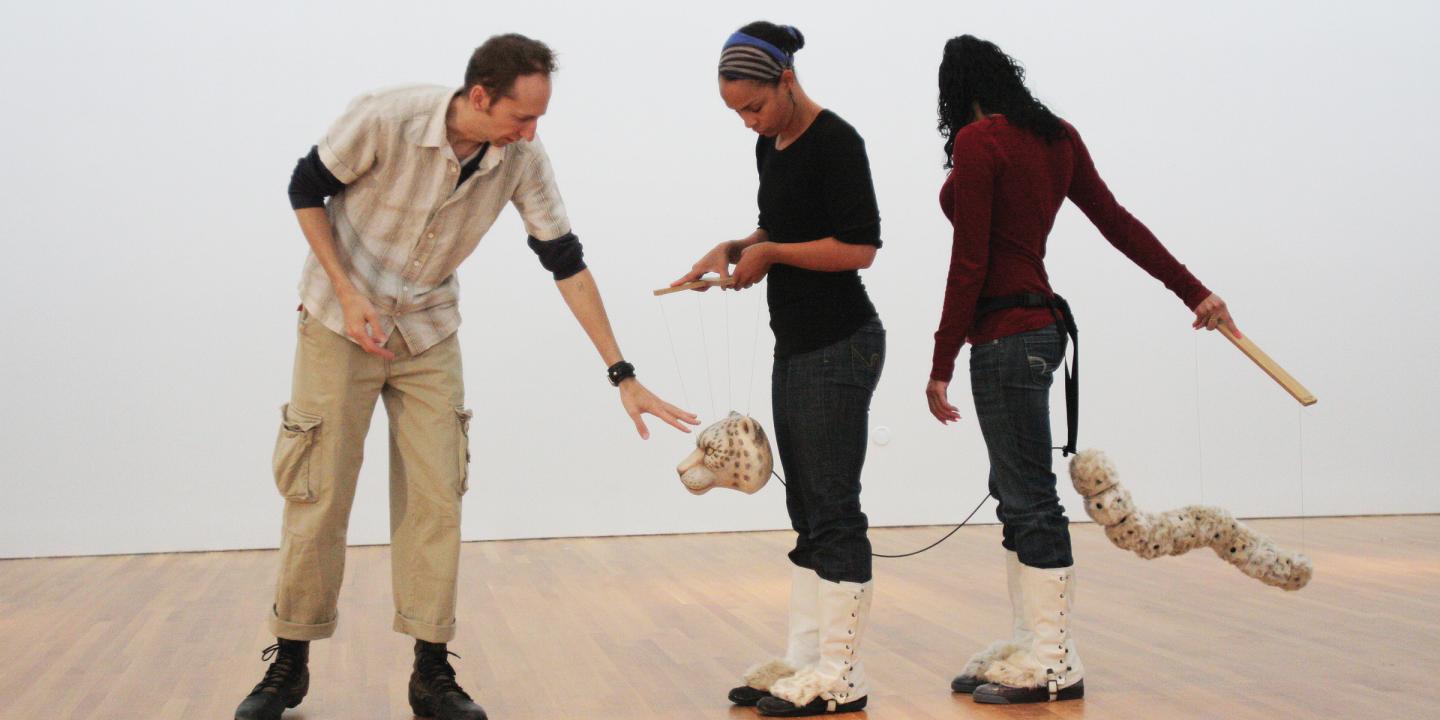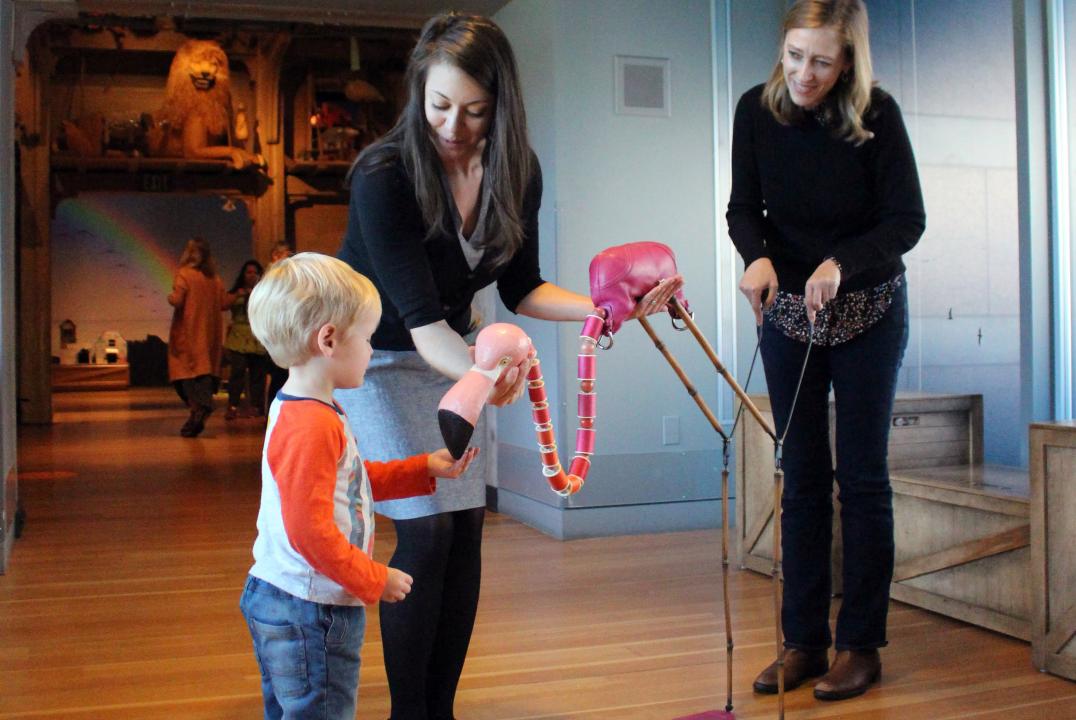
One of our visitors’ favorite aspects of the Noah’s Ark experience is meeting the handcrafted puppets made from found objects. Not only are the puppets uniquely and whimsically designed, but bringing them to life requires spirited collaboration, a theme echoed throughout the Noah’s Ark galleries: that only together can we build a promising future.
In the tradition of Japanese bunraku puppetry—where several performers work together, in plain view of the audience, to animate each puppet—the animal puppetry aboard Noah’s Ark requires close cooperation.
It is only through the puppeteers’ teamwork that pink flamingos strut, elegant ostriches march, and white snow leopards prowl.
Springing the puppets into action is a challenge that requires dexterity and skill at both the individual and group levels. Noah’s Ark educators receive ongoing puppeteer training, during which they learn to manipulate all the puppets—from the Indian vulture that flies solo to the life-sized green anaconda that requires up to five puppeteers working in sync.
The team trains regularly and participates in intensive workshops led by Christopher M. Green, the Brooklyn-based artist responsible for the design and construction of the Ark’s kinetic animal figures. During training sessions, Green uses a variety of exercises to sharpen the puppeteers’ awareness of their own bodies as well as their responses to the movements of others.
Experimenting first with objects as simple as a chair, then graduating to work with the puppets themselves, the puppeteers practice reading their colleagues’ body language and non-verbally communicating through breath cues and subtle shifts as they take turns leading the puppets’ complex moves.
When a Noah’s Ark visitor experiences the lifelike grace of the puppets in action, the effect of these training exercises becomes clear. Take, for example, the performance of a puppet favorite: the gangly pink flamingo. Sporting fly-swatter feet, stilt-like bamboo legs, a handbag body, and a lanky neck made from spools of pink thread, this Caribbean flamingo is perhaps the most challenging to manipulate. It requires two puppeteers—one supporting the head and torso, and another operating the legs—moving at a synchronized, steady pace.

The puppeteers must log many hours of practice before making their flamingo debut on the Noah’s Ark floor. Once there, they work as a team; they must decide together when to start walking, when and where to pause and interact with an intrigued gallery visitor, when to dig at the floor for food, when to reach the flamingo’s long, graceful neck around its body to groom itself.
Another popular favorite is the Japanese red fox, known as kitsune in Japanese. The two foxes in the Noah’s Ark galleries love to inquisitively approach visitors as they are at play, often coming to a rest by lying down on the floor with their feet splayed in opposite directions. One puppeteer is responsible for guiding their curious fox, while another might translate the Japanese folktale encoded on its decorative tail.
Through these remarkable performances, it is the puppeteers who round out the personalities of the animals. Regarding the puppet as an extension of their own bodies, the puppeteers channel their energy into the puppet, collectively sharing the joys of animating the once inanimate. Working together as a team, Noah’s Ark puppeteers truly uphold the Skirball’s core ideals of making connections, building community, and celebrating life.